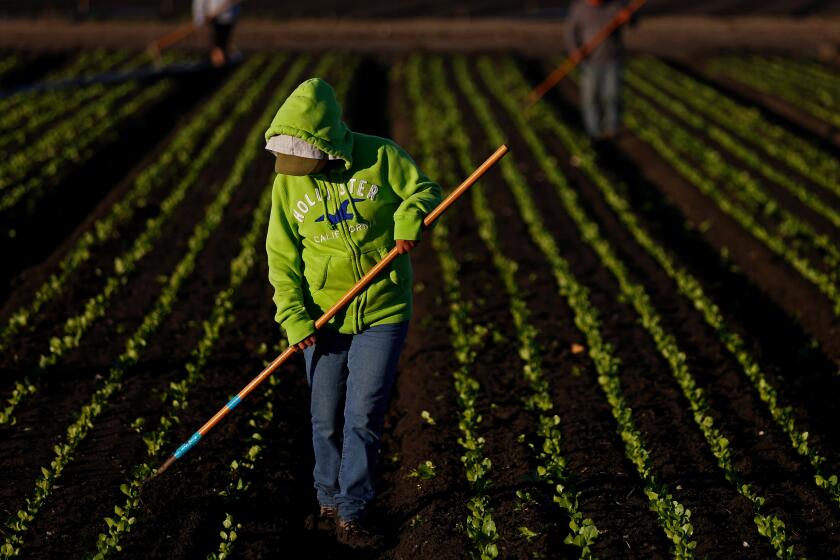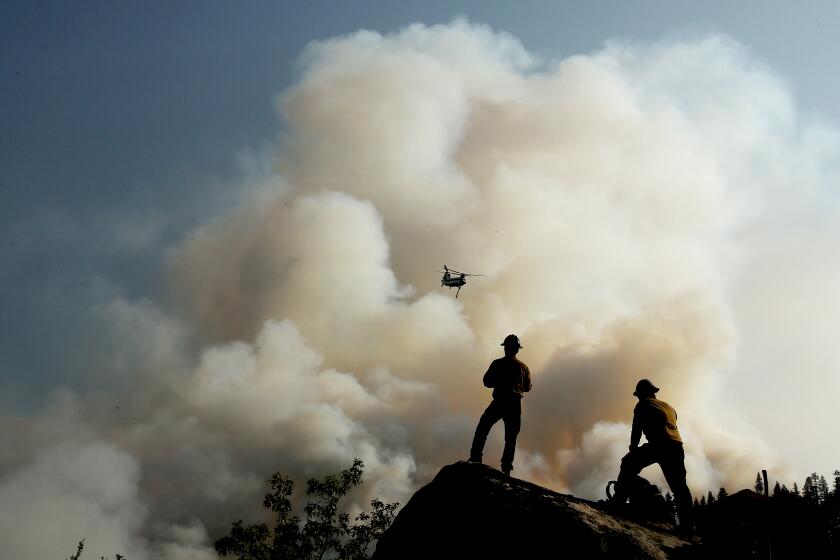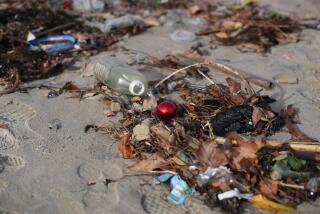McChicken vs. Big Mac: Could environmental labels transform American burger culture?

- Share via
Could ordering a McChicken, as opposed to a Big Mac, help in the fight against climate change?
To fend off the disastrous effects of global warming, many people have been willing to trade in their gas-guzzling cars, install solar panels on their roofs or dial down their energy use.
But on any given day, more than a third of Americans find themselves eating fast food, which serves up a significant portion of climate-burdensome red meat. What customers decide to order may be a matter of personal preference, but experts say it has tremendous implications for the amount of planet-warming gases emitted from farms.
In a study published Tuesday in the Journal of the American Medical Association, researchers polled more than 5,000 adults nationwide to gauge whether placing climate-impact labels on fast-food menus might persuade customers to make more environmentally friendly choices.
Warming temperatures driven by climate change may be creating more hospitable conditions for disease-carrying insects to thrive.
They found customers were 23% less likely to order red meat at a fast-food restaurant if the menu had labels warning that those meals had a negative effect on the climate. Customers were nearly 10% more likely to order a more climate-friendly option, such as chicken or fish, if those items had labels promoting them as climate-friendly.
“If, at a population level, we made even just some minor shifts to the way we make our food choices, substituting some beef items for less impactful choices, there can be a really measurable effect on climate change,” said Julia Wolfson, lead author of the study and associate professor at Johns Hopkins Bloomberg School of Public Health. “So the question is, how do we nudge those choices in that direction?”
The results suggest climate-related food labeling may be an effective tool to whittle down the demand for beef products, and, in turn, the industry’s outsized carbon footprint. Animal-based food production is responsible for about 14.5% of global greenhouse gas emissions, much of which is associated with cattle belching methane — a greenhouse gas 25 times more efficient at trapping heat than carbon dioxide.
The labeling strategy might also help to transform American burger culture — a saturated-fat ethos that Southern California has helped to cultivate for over a century.
From roughly the time a teenage cook in Pasadena is said to have invented the first cheeseburger in 1924, beef has grown to be a major ingredient on menus across the country. Burgers were especially popularized at speedy fast-food chains, which used drive-thru lanes and car-side service to make ordering a meal even more convenient. Southern California helped fuel this national hunger for burgers by hosting the original McDonald’s, in San Bernardino; the first Jack in the Box, in San Diego; and the premier In-N-Out, in Baldwin Park.
Today, meat consumption in the U.S. remains disproportionately high, and burgers still have a prominent role on most fast-food menus. But these restaurants have increasingly offered meat-free alternatives, such as patties made from vegetables and soy protein.
Excessive groundwater pumping has long been depleting aquifers in California’s Central Valley. Now, scientists say the depletion is accelerating.
In the survey, researchers asked would-be customers to choose from a 13-item menu from a popular fast-food chain. They divided survey participants into three separate groups: one that was given a menu in which beef burgers had red labels, reading “High Climate Impact”; another that saw a menu in which chicken, fish and vegetarian meals had green “Low Climate Impact” labels; and a third with no climate information.
Among the group that reviewed the menu with the red, warning-style label, 61% of survey-takers opted for a non-beef meal. About 54% of those who received the menu with the green, climate-positive label chose a non-beef item.
“There’s some evidence that warning-style labels, which have been implemented in other settings for high sodium content or high sugar content, are more effective than positive-spin labels,” Wolfson said. “And this might just be following that trend.”
The survey examined a broad cross-section of adults by sex, race, age, political ideology, income and region. Gender, however, appeared to be the only significant difference in the effectiveness of the labeling, with women heeding the red climate label more than men.
“There is other evidence that calorie menu labels tend to be more effective and noticed more by women compared to men,” Wolfson said. “So it could be that the high-impact message was more salient for women compared to men. It could be that they were more flexible in what they wanted to order, whereas men saw that message were like, ‘OK, but this is still what I want to order.’ It’s worth exploring further.”
Nearly 17 million acres will fall under the worst ranking from the state fire marshal, a 14.6% increase since the map was last updated in 2007.
So far, these labels are an uncommon sight on fast-food menus. It is unlikely that the industry would voluntarily tag beef items with negative labels unless it’s required by regulation. However, some food chains have proactively labeled meals associated with fewer greenhouse gas emissions.
Panera Bread, for example, partnered with Washington, D.C.-based nonprofit World Research Institute to measure the carbon footprint of its meals in an effort better inform customers about the climate impacts of their entrees. Items with a lower carbon footprint are labeled as “Cool Food Meals” with a green smiling emoji with its tongue sticking out.
History has shown that American diets have changed over time as awareness of health consequences has grown. For example, people are drinking fewer sugar-sweetened beverages since they’ve been linked to obesity and other health conditions.
Now, at a time when people are increasingly interested in taking action to curtail planet-warming gases, perhaps this information could empower customers to make more climate-conscious decisions.
“There are certainly people who are not going to change,” Wolfson said. “But there are also people who do adapt. Building knowledge and awareness around the way our food choices do affect climate change, that is one direct action that we, as individuals, can take to mitigate climate change. It’s a salient message for some people and information that is worth amplifying.”










